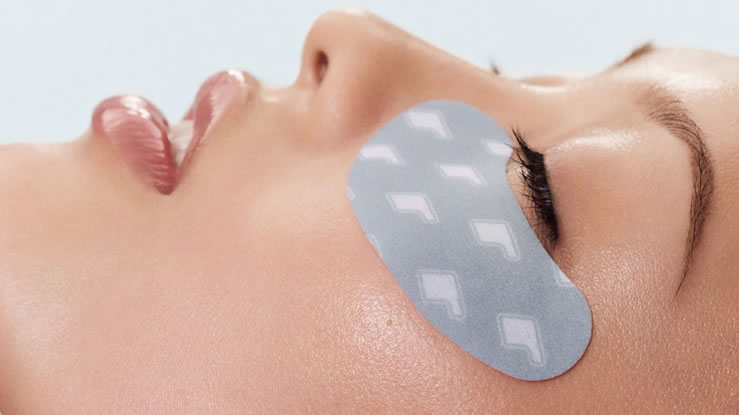Salicylic acid is a powerhouse ingredient in the skincare world, known for its ability to combat acne, exfoliate the skin, and clear pores. Derived from willow bark, this beta hydroxy acid (BHA) has been a favorite among dermatologists and skincare enthusiasts for years. But a common question persists: Is it safe and effective to use salicylic acid every day?
In this article, we’ll explore how salicylic acid works, who should and shouldn’t use it daily, the benefits and risks, and how to integrate it into your routine safely.
What Is Salicylic Acid?
Salicylic acid is a beta hydroxy acid that penetrates the skin to dissolve debris and oil in the pores. Unlike alpha hydroxy acids (AHAs) which work on the surface of the skin, salicylic acid works deep inside the pores, making it highly effective for oily and acne-prone skin types.
It is commonly used in:
-
Cleansers
-
Toners
-
Spot treatments
-
Serums
-
Peels
Because of its oil-solubility, it can reach into clogged pores and break down the glue-like substance holding dead skin cells together, helping to prevent blackheads, whiteheads, and other forms of acne.
Read Also>>>What does salicylic acid do for the skin?
How Does Salicylic Acid Benefit the Skin?
Salicylic acid is not just for acne. Its ability to exfoliate and unclog pores makes it valuable for overall skin health. Some of its key benefits include:
Exfoliation and Smoother Skin
By removing dead skin cells, salicylic acid promotes cell turnover, which leads to a smoother and brighter complexion.
Acne Control
It targets acne at the source by dissolving sebum and preventing the formation of comedones (clogged pores).
Reduced Inflammation
Salicylic acid has anti-inflammatory properties that soothe redness and irritation, making it useful for mild to moderate acne.
Oil Control
It helps regulate oil production over time, especially with consistent use.
Can You Use Salicylic Acid Every Day?
The short answer: it depends on your skin type, product formulation, and concentration of the acid.
Safe for Some, Too Harsh for Others
For individuals with oily or acne-prone skin, daily use of a low-concentration salicylic acid product (0.5% to 2%) is generally well-tolerated. However, for those with sensitive or dry skin, daily use can lead to over-exfoliation and irritation.
Form Matters
Using a salicylic acid cleanser that washes off the skin quickly is often less irritating than a leave-on serum or toner. For example, a 2% salicylic acid cleanser may be gentler than a leave-on serum with the same percentage.
Frequency by Skin Type:
-
Oily and acne-prone skin: Can often tolerate daily use, especially with gradual introduction.
-
Combination skin: May tolerate 3–4 times per week.
-
Dry or sensitive skin: Best to start with 1–2 times per week and monitor for irritation.
-
Normal skin: Use based on specific concerns like occasional breakouts or dullness.
Potential Side Effects of Daily Use
Overuse of salicylic acid can have adverse effects. While it’s an effective treatment, balance is key.
Common Side Effects Include:
-
Dryness or peeling
-
Redness and irritation
-
Burning or stinging sensation
-
Increased sensitivity to other skincare ingredients
If your skin barrier becomes compromised, it may take weeks to recover. Therefore, daily use is not universally recommended without considering skin tolerance.
When to Avoid Daily Salicylic Acid Use
There are certain cases when daily use should be avoided altogether:
Compromised Skin Barrier
If your skin feels tight, irritated, or appears red and flaky, take a break. Using salicylic acid on a damaged skin barrier can worsen symptoms.
While Using Other Actives
Avoid layering salicylic acid with strong exfoliants like glycolic acid, retinol, or benzoyl peroxide, unless directed by a dermatologist. This can cause excessive dryness and sensitivity.
During Pregnancy
Although considered low-risk, consult your healthcare provider before using salicylic acid products during pregnancy, especially in high concentrations or as chemical peels.
Best Practices for Daily Use
If you decide to use salicylic acid daily, follow these tips to minimize risks:
Start Slow
Begin with a lower concentration (0.5%–1%) once every other day and increase to daily use only if your skin tolerates it well.
Moisturize Generously
Always follow up with a good moisturizer to restore hydration and support your skin barrier.
Use Sunscreen
Salicylic acid increases skin’s sensitivity to the sun. A broad-spectrum SPF 30 or higher is essential during the day.
Listen to Your Skin
Discontinue or reduce usage if you notice signs of over-exfoliation like redness, flaking, or burning.
What Types of Products Work Best?
There are several types of salicylic acid products available, and the best one for daily use depends on your routine:
Cleansers
These are great for daily use because they’re washed off quickly, reducing the risk of irritation.
Toners
Leave-on formulations can be more effective but should be used with caution if you have sensitive skin.
Serums
Potent and effective, but best used a few times a week unless specially formulated for daily application.
Spot Treatments
Best for targeted use on breakouts, not for all-over daily use.
How to Combine Salicylic Acid with Other Ingredients
Understanding ingredient compatibility can help you build a balanced skincare routine.
Compatible With:
-
Niacinamide: Helps reduce redness and balances oil
-
Hyaluronic acid: Hydrates and prevents dryness
-
Ceramides: Restores skin barrier
Use with Caution:
-
Retinol: Can cause excessive dryness when used with salicylic acid
-
Vitamin C: Best used at different times of day
-
Other exfoliating acids: May lead to irritation
Alternatives If Daily Use Doesn’t Work
If daily use of salicylic acid irritates your skin, there are alternative ingredients that offer similar benefits:
-
Lactic acid: A gentler exfoliant suitable for sensitive skin
-
Azelaic acid: Great for redness and acne with anti-inflammatory benefits
-
Benzoyl peroxide: Effective against acne-causing bacteria (for spot use)
Dermatologist Recommendations
Many dermatologists recommend salicylic acid as part of a well-rounded skincare routine, but they emphasize the importance of knowing your skin and avoiding overuse. Consulting a skincare professional can help tailor the frequency and concentration to your individual needs.
So, is it OK to use salicylic acid every day? For some skin types especially oily and acne-prone, it can be safe and effective when introduced gradually and used in low concentrations. However, for others, daily use may be too harsh, potentially leading to irritation and a compromised skin barrier.
Ultimately, successful use of salicylic acid hinges on listening to your skin, selecting the right formulation, and being consistent without overdoing it. If in doubt, consult a dermatologist for personalized advice. Balanced skincare is not about doing more, it’s about doing what’s right for your unique skin.



















